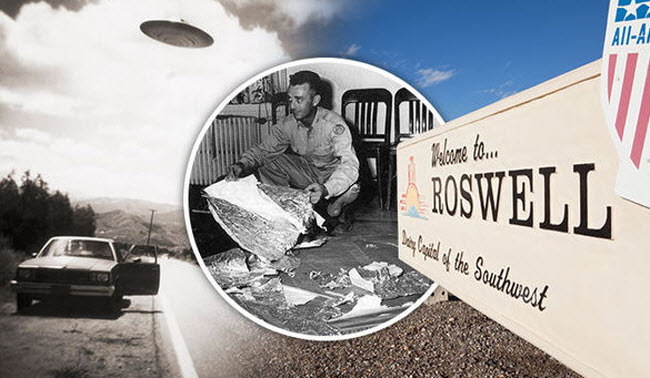In the town of Roswell, located in the southeastern corner of New Mexico, USA, there’s a renowned restaurant with a unique design resembling a spaceship. This establishment attracts hundreds of visitors daily. During the day, the restaurant shines brightly under the sun, while at night, its lights sparkle attractively. Despite the restaurant’s unconventional design, many see it as a clever marketing strategy capitalizing on the mysterious event that occurred in Roswell in the mid-1940s, known as the Roswell Incident. This incident involved an unidentified flying object crashing onto a farm, leading the U.S. military to cordon off the area and handle the situation with extreme secrecy. Some witnesses claimed it was a flying saucer with extraterrestrial beings, but the military denied these allegations, offering an alternate explanation that many found hard to believe. To this day, the incident remains shrouded in mystery, with numerous shocking stories emerging over the years.
The Roswell Incident began in June, or possibly early July, 1947. William Brazel, a local rancher, woke up to find an astonishing discovery on his property: a large area of shiny debris composed of rubber strips, tinfoil, and somewhat rigid sticks. Brazel had never heard of flying saucers before. This discovery coincided with other significant news. On June 24, a pilot named Kenneth Arnold claimed to have seen nine unidentified objects flying like saucers near Mount Rainier in Washington state, estimating their speed at 1930 km/h. At the time, no known aircraft could reach such speeds, and the Air Force denied having any experimental aircraft or guided missiles fitting this description. This story quickly made headlines, introducing the term “flying saucers,” despite Arnold describing the objects as crescent-shaped.
The country was soon engulfed in panic, with police officers and astronomers reporting similar sightings from people in New York and other eastern states. By July 7, Brazel decided to act on his discovery and handed over a box of the collected debris to George Wilcox, a Roswell town officer. At the time, there was talk of a reward for information about these unidentified flying objects. According to the local Roswell Daily Chronicle, Brazel suggested that his discovery might be a flying saucer. Once Officer Wilcox received the box, he contacted Colonel William Blanchard, head of the Air Force in the area, who sent his men to collect the remaining material. On July 8, Walter Haut, the Air Force spokesperson in Roswell, issued a press release stating:
“Numerous rumors about a flying saucer became a fact yesterday. The 509th Bomb Group Intelligence Office of the Eighth Air Force stationed at Roswell Army Air Field was fortunate enough to obtain a flying saucer through the cooperation of a local rancher and police officers. The saucer had landed on a ranch near Roswell sometime last week. Due to a lack of telephone facilities, the rancher kept the debris until he could contact the police, and necessary actions were taken.”
This statement reinforced the idea of a flying saucer discovery, given its official source.
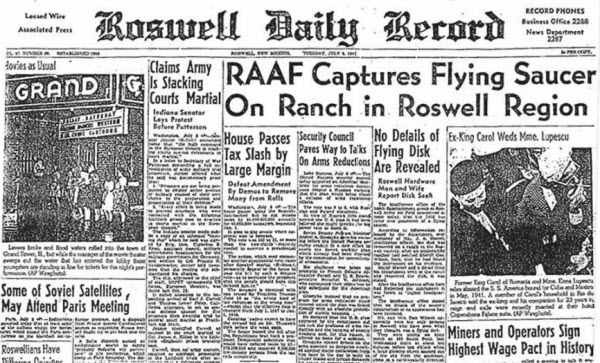
The statement was published in the local Roswell Daily Record, along with news that Major Jesse Marcel, the intelligence officer sent to the crash site with Sheridan Cavitt, the counterintelligence officer, had shown his ten-year-old son, Jesse Jr., some of the debris, which had markings resembling hieroglyphics. According to The Guardian, this detail remained in the boy’s memory. As public interest grew and the media buzzed, the military quickly acted to downplay the story. The following day, after government scientists began arriving at the site, officials claimed the debris was from a weather balloon. Marcel was photographed with the debris at a press conference, and the case was considered closed—or so everyone thought.
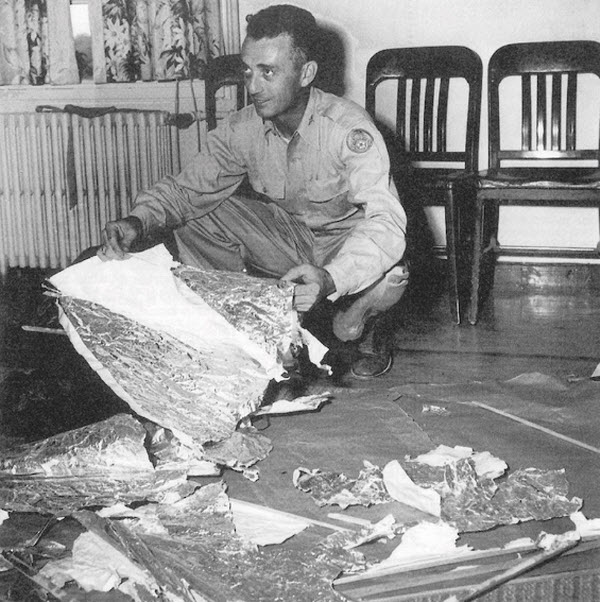
Interest in the Roswell Incident revived in 1978 when physicist and UFO researcher Stanton Friedman interviewed Marcel, who claimed the 31-year-old discovery was otherworldly and that the government had instructed him to remain silent. Friedman re-examined the incident, seeking additional witnesses and inspiring other authors like Charles Berlitz and William Moore, who published a book in 1980 suggesting a spacecraft had crashed near Roswell, killing its extraterrestrial occupants. They concluded that the government had covered up the incident. The resurgence of interest was fueled by popular science fiction films like “Star Wars” and “Close Encounters of the Third Kind,” which, according to The Times, led to increased UFO sightings and beliefs when such films and TV shows premiered.
In 1989, following an episode of “Unsolved Mysteries” featuring the Roswell incident, a caller named Glenn Dennis claimed that a friend who worked as a nurse at Roswell Army Air Field had seen three alien bodies. Although this call did not attract much attention at the time, the real bombshell came in 1994. The U.S. Air Force admitted that the weather balloon story was false but maintained that the debris was from a secret project involving high-altitude balloons carrying microphones designed to intercept Soviet atomic bomb test sounds. This project, known as “Mogul,” operated between 1947 and 1949, with balloons made from unusual materials that could be mistaken for something mysterious. Some believed this official acknowledgment closed the case, but that was not the end.
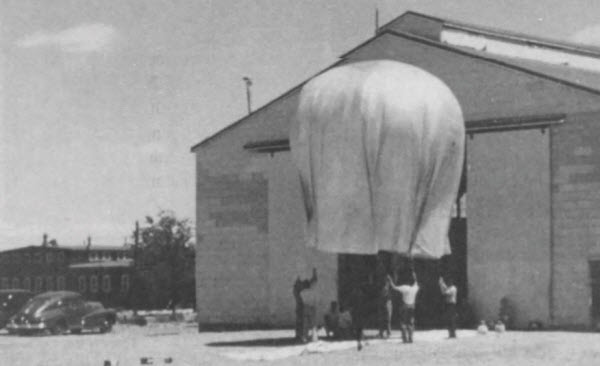
Despite the U.S. government’s official explanation, skepticism remained. Kenneth Drinkwater, a senior lecturer in psychology and paranormal studies at Manchester Metropolitan University, stated that conflicting official accounts led to persistent uncertainty. The first official story of a weather balloon was unclear, and the subsequent change in the narrative fueled suspicion that something was being covered up. This ongoing intrigue led to renewed interest in the Roswell Incident, with significant attention given to the testimonies of those present, many of whom were respected military personnel. One such individual reported that all senior officers, except one, believed the debris was of extraterrestrial origin rather than a weather balloon. The only dissenter was counterintelligence officer Sheridan Cavitt, who accompanied Marcel to the site and claimed there was nothing unusual about the debris. Cavitt denied being threatened by the government and stated that the debris was not scattered widely, which contradicted the “Mogul” project’s claim of extensive debris.
Adding to the mystery, a 1995 film claimed to show an autopsy of extraterrestrial beings, supposedly filmed by a U.S. military official shortly after the Roswell incident. The footage, broadcast by video entrepreneur Ray Santilli, caused a sensation but was later admitted by Santilli in 2006 to be mostly fake, although he maintained it was based on now-missing real footage.
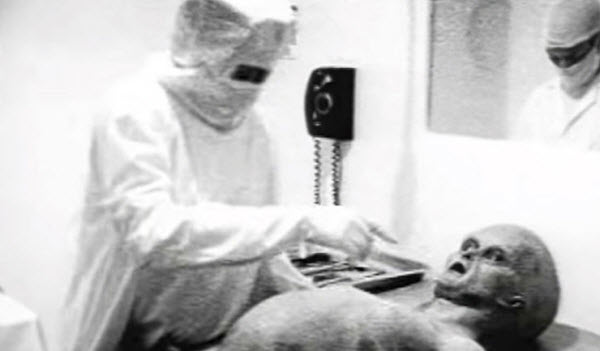
Over the past forty years, new claims and leads have intensified the Roswell mystery. For example, UFO investigator Calvin Parker recently revealed that Marcel had hidden three metallic pieces from the crash site in his home’s water heater, though they were never found. Another theory, proposed by an unnamed source who worked as an engineer at Area 51, claimed that Nazi concentration camp doctor Joseph Mengele collaborated with the Soviets to create humanoid creatures resembling aliens, which were then flown over New Mexico to instigate panic among Americans as part of Cold War tactics. However, skeptics questioned this theory due to the lack of evidence in Soviet archives, and if the intention was to cause panic, it failed spectacularly.
The truth remains elusive, with successive U.S. presidents failing to provide a definitive answer. In a 2014 interview, former President Bill Clinton stated that his administration investigated the incident and found nothing of interest, a sentiment echoed by Barack Obama, who said that while people frequently ask about Roswell, the matter is not as intriguing as some believe. Former President Donald Trump had a different view; when asked about revealing more information on the Roswell incident, he said he wouldn’t discuss what he knew but found it very interesting.
